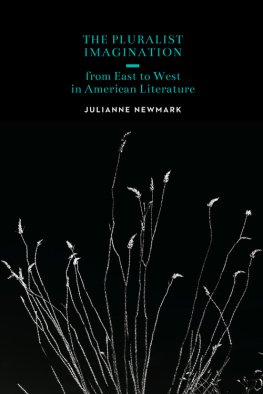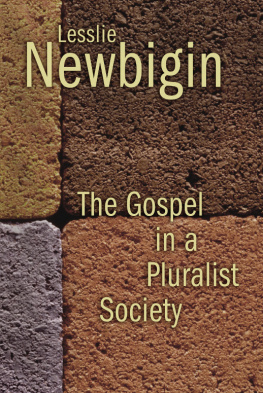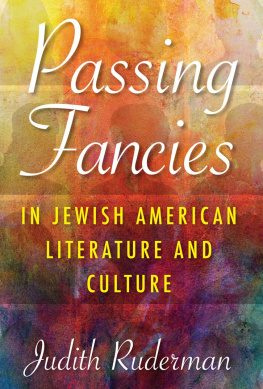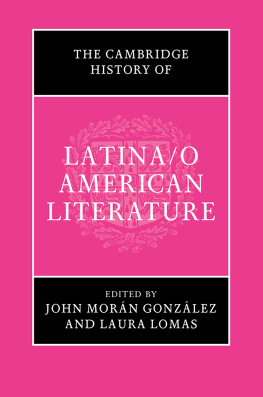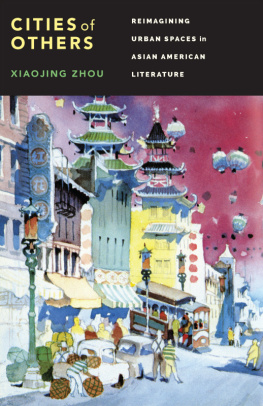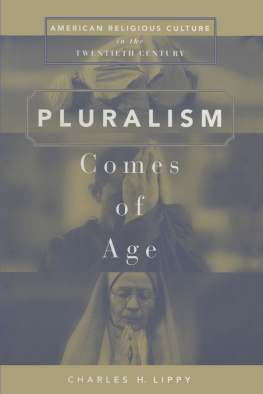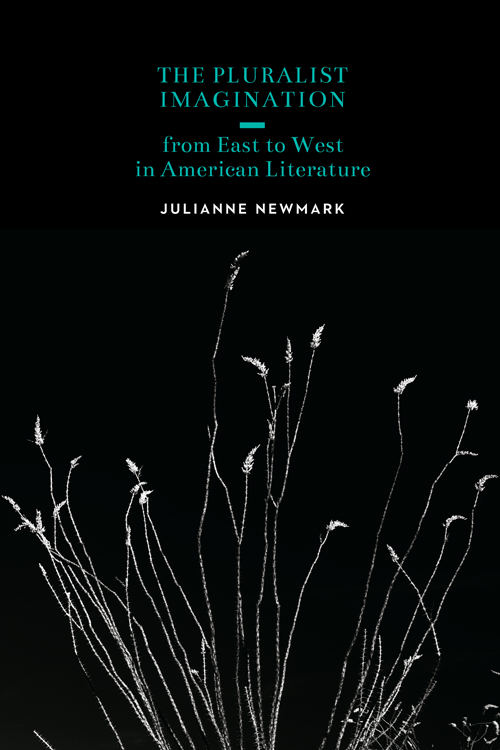
Julianne Newmark leads us back in time to multiethnic authors who thought deeply and creatively about some of the seemingly intractable racialized rhetorics that still bedevil us today. This is a timely, beautiful, and ultimately hopeful book, one that has much to say about larger public conversations surrounding American identity, how we read the past, and how we build coalitions across racial and ethnic lines.
Siobhan Senier, editor of Dawnland Voices: An Anthology of Indigenous Writing from New England
The Pluralist Imagination from East to West in American Literature
The Pluralist Imagination from East to West in American Literature
Julianne Newmark
University of Nebraska Press | Lincoln and London
2014 by the Board of Regents of the University of Nebraska
Acknowledgments for the use of copyrighted material appear in , which constitutes an extension of the copyright page.
All rights reserved
Cover image courtesy Library of Congress, Carol M. Highsmith Archive
Library of Congress Cataloging-in-Publication Data
Newmark, Julianne, author.
The Pluralist Imagination from East to West in American Literature / Julianne Newmark.
pages cm
Includes bibliographical references and index.
ISBN 978-0-8032-5479-4 (hardback: alk. paper)
ISBN 978-0-8032-8633-7 (epub)
ISBN 978-0-8032-8634-4 (mobi)
ISBN 978-0-8032-8635-1 (pdf).
1. American literatureHistory and criticism. 2. National characteristics, American, in literature. 3. Cultural pluralism in literature. 4. Transnationalism in literature. I. Title.
PS 169. N 35 N 49 2014
810.9'358dc23
2014016575
The publisher does not have any control over and does not assume any responsibility for author or third-party websites or their content.
Contents
The Blackout of 2003 in the city of Detroit, sparked by a power plant failure outside of Cleveland, soon spanned the Midwest and East Coast and extended into Ontario, Canada. My experience of this multiday blackout sets into relief many ideas concerning nativism, pluralism, and belongingthe subjects of this bookwith which I had grappled as a person living in a large midwestern city to which I had moved from a smaller city in the Southwest (Albuquerque, New Mexico). Detroit, a city that had long been known nationally for race-driven strife, experienced a stretch of days where blackout and power became identifiers only of the sweeping collapse of the electricity grid. Of course, parts of Detroit itself were among the last in the power-outage region to come back online, conjuring up hostilities concerning both race and power, but during the first day of the event itself at least, an electric conversion of powerlessness into control and community spread through the city.
Detroit has been beset by national stories and local realities of its own collapse, yet the collapse of the electrical grid that caused the lights to go out for days was not about race or the school system or white flight or the auto industry. This technology failure, then, might be viewed as a metaphorical episode of the imbrication and momentary recalibration of place, power, possession, and control. Despite the concerns of the mayor (Kwame Kilpatrick) and the police that the power outage might spark violence in the city, the people of Detroit came together in and across neighborhoods and mutually experienced a moment (though only lasting a few days) that is emblematic of how communities cohere around challenging and unexpected events. Certainly, a power outage in which few people died, even one that was the largest outage of its kind in American history, does not compare to the catastrophic consequences of other natural and human-influenced calamities, like Hurricane Katrina or community-destroying wildfires or epic tornadoes. But what this isolated, relatively brief episode can reveal is something paradigmatic about how communities of people, heterogeneous as they may be, cohere as a we when all of these people share a singular experience in a specific place.
Detroit, Michigan, 1914 (detail), showing steam and electric railways. Map by Wm. Sauer. Courtesy of the Stephen S. Clark Library, University of Michigan.
The power grid itself is a network, as are relationships between people in cities, the streets of cities themselves, and the technologies on which people rely to tie them together. These networks can be organic, such as in a familys genealogy or a mat of woven vines, or they might well be contrivances designed to order natural domains, such as what the wagon-wheel street grid in the 1914 Detroit map at the start of this preface shows. In the situation of a power outage, we face our reliance on systems and technologies that order our lives, and we see, in the dark, the artificiality and transiency of these grids (power grids and city grids), which are products of a desire for ease, uniformity, order, and assimilation. Urban plans, such as those of the City Beautiful movement that shaped Detroit during the era in which the map was prepared, and national ideologiesnamely, nativism in this bookshare an interest in imposing an order, or what we might call cultural homogeneity, on heterogeneous natural domains (the product of which is the manicured organicism of city parks, for example) and on human populations. But the neatness of an electricity network or a city map belies the complexities of the human populationthe multiethnic citizenrythat occupies the interstices and grid boxes of the city itself.
In such works as this one, ideas concerning national order, discussed here as assimilation, cast long shadows. Throughout this book, the term assimilation is most often used to describe immigrant and marginalized Americans proximity to or distance from the presumably comfortable domain of belonging, often understood as nativity, in America. To assimilate is to fit into the grid, as it were. The writers whose works I examine in this book reveal that sometimes the American triumph is in not assimilating to a retrogressive ideal but rather in endorsing plurality, particularly via the kinds of community and national pluralisms that are remarkably represented by specific American places. Placesspecific, named placesdo not inherently denote pluralism, but in this nation there are exemplary places where special interactions allow for new definitions of nationality to emerge.
Regarding Detroit during the 2003 power outage, the place of the city and my particular neighborhood in it, the Cass Corridor, allowed me at once to possess an optic encompassing the difference and unity of a diverse group of people in the city who were mutually experiencing something sustained, somewhat scary, and largely unpleasant that was, for most, also new. The 2003 power outage is emblematic of how people, myself included, come to think of themselves as tied to a particular place and its community because they were there when a problem happened and were invested in its resolution. I went through an experience with other people who also had the unique experience of having been there. Being there means undergoing something formative of which the defining features are the where, the why, and the we of experience, much more so than the often racially inflected who. Belonging, then, is about the conviction that place(ment) helps a person to become who he or she is. A crisis (a small one like a power outage or a large one like a devastating flood) can bring a plural people together in a uniform modality of belonging and endurance. Yet even more quotidian experiences and survivals, in moments that are not discrete crises, can create a similar filial bond between a people and a place.
Next page
